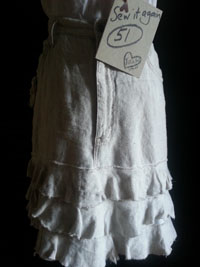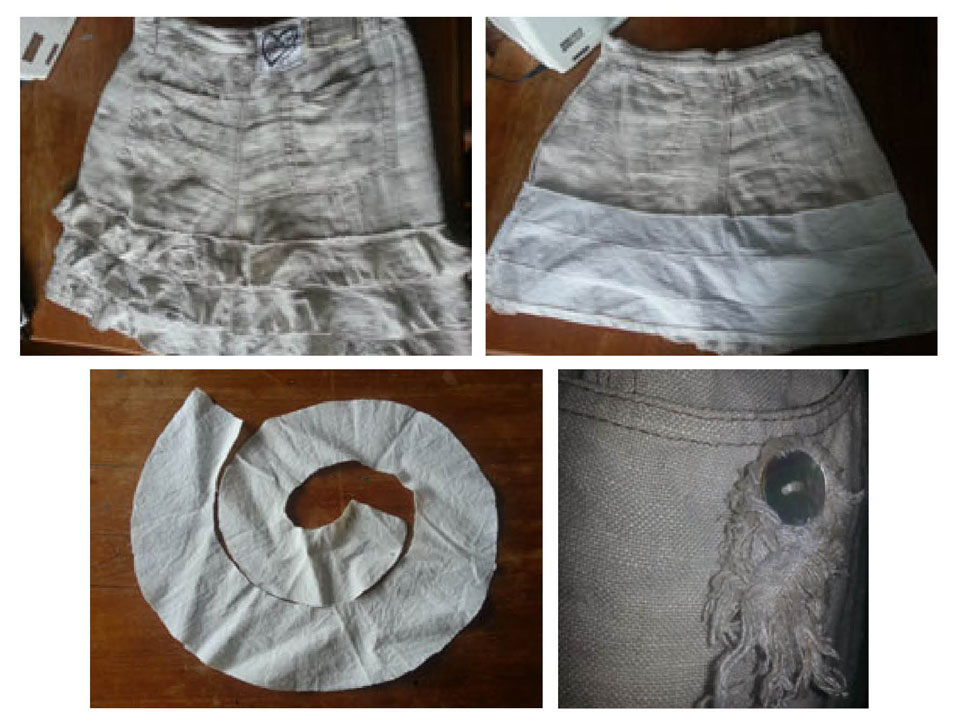 Linen jeans becomes rara skirt by chopping below zip, extending skirt and adding frill made from off-cuts.
Linen jeans becomes rara skirt by chopping below zip, extending skirt and adding frill made from off-cuts.
Reusing and resewing from existing clothing is an easy way to upgrade/revive/extend your wardrobe and I’m on a mission to do that for better or worse for 365 days this year.
Why? One reason is the ecological impacts of constant consumption. Society’s endless chase of new clothing consumes resources at the production end (water, energy, nutrients and/or petroleum) and results in pollution at the disposal end (dumps, leaching and/or methane).
World awareness is attuned to the potential global food crisis and I wonder where clothing fits into this equation. As more land is required for food production, does that mean less available for natural fibre production? This FAO study shows most of the increase in textile fibre use in the past two decades has been in synthetic fibres make from petroleum.
In his book The Coming Famine, Julian Cribb makes a couple of references (pg 33) to fibre production. Using the ‘virtual water’ model, it seems a cotton t-shirt requires 4000 litres of water to produce, while another water model indicates growing 1kg of wool (enough for a suit) requires 170,000 litres of water.
Cribb concludes that the looming world water crisis won’t be solved by governments and water authorities acting alone – it will take behaviour change of entire communities that have learned to value their water as the primary ingredient of life.
I’m just one little person doing things differently, modelling a behaviour change in Brisbane Australia, by refashioning existing clothing using simple home-sewing techniques.
I bought these op shop linen jeans for the fabric. I cut the trousers across about 2cm below the waist and created a skirt-extender from an old white sheet. I then opened out the leg off-cuts and created circles of frill, which I zigzagged onto the skirt extension. I created a little pocket ornament by sewing off-cuts together with a button and fastening to skirt with a safety pin.
